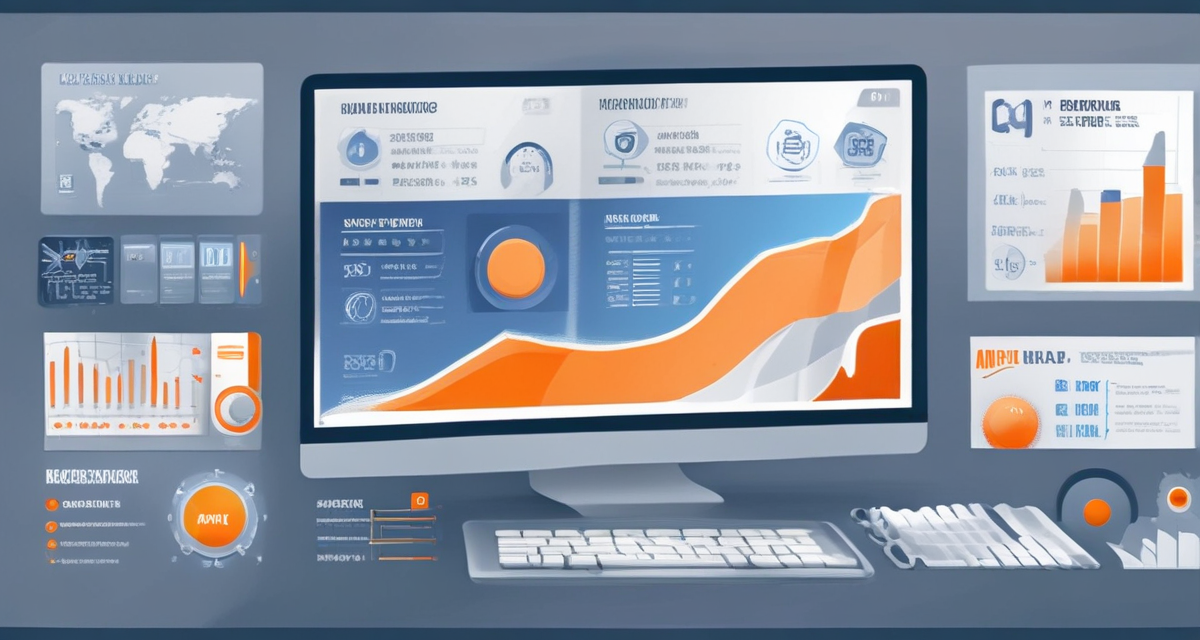Understanding CPC, CPM, and CPA is crucial for effective digital marketing.
In this article, you’ll get a clear breakdown of these pricing models and how they can benefit your business. We’ll explore their unique advantages and practical tips for optimizing each one.
In this article, you will learn:
- The basics of CPC, CPM, and CPA.
- How to optimize each pricing
model. - Choosing the right model for your goals.
Understanding CPC: Cost Per Click
When diving into the world of content promotion, one of the first terms you’ll encounter is Cost Per Click (CPC). It’s a common metric used in digital marketing to determine how much you’re paying each time someone clicks on your ad. But what does this really mean for your business?
The main idea of CPC is to measure the cost-effectiveness of your ad campaigns by tracking the price per individual
click.
At its core, CPC helps you gauge the direct engagement from your audience. The lower the CPC, the more efficient your ad spend is. But how do you achieve a low CPC? Here’s a closer look:
Benefits of CPC
- Direct Audience Engagement: You’re only paying for actual clicks, ensuring your budget targets interested users.
- Budget Control: You can set a maximum CPC bid, giving you control over how much you’re willing to spend per click.
- Performance Tracking: Easily track and measure the performance of your ads in real-time.
Strategies to Lower CPC
To get the most out of your CPC campaigns, consider these strategies:
- Keyword Research: Use long-tail keywords to target niche audiences and reduce competition.
- Ad Quality: Improve your ad relevance and quality score to lower costs.
- Landing Page Optimization: Ensure your landing pages are relevant and user-friendly.
For example, if you’re running a campaign for a new product, focus on specific keywords related to that product. This approach helps attract users who are more likely to be interested, thereby reducing your CPC.
Real-World Example
Consider a small business selling handmade jewelry. By targeting long-tail keywords like “handmade silver earrings” instead of broad terms like “jewelry,” they can attract a more specific audience. This specificity not only lowers the CPC but also increases the likelihood of conversions.
In summary, CPC is a valuable metric for businesses looking to optimize their ad spend and directly engage with their audience. By focusing on keyword research, ad quality, and landing page
optimization, you can achieve a lower CPC and maximize your marketing budget.
Exploring CPM: Cost Per Mille
Cost Per Mille (CPM), also known as Cost Per Thousand, is a common metric in digital advertising. It measures the cost for one thousand impressions or views of an ad. This model is particularly effective for campaigns focused on brand awareness rather than direct
engagement. CPM can help businesses reach a broad audience at a relatively low cost per view.
CPM is ideal for increasing brand visibility and awareness through widespread ad exposure.

Understanding CPM is crucial for businesses aiming to maximize their reach. With CPM, you’re paying for every thousand times your ad is shown, regardless of whether the audience interacts with it. This can be especially useful for new product launches or rebranding campaigns where the goal is to get as many eyes on your content as possible.
Advantages of CPM
- Wide Reach: CPM is perfect for increasing visibility and building brand recognition.
- Predictable Costs: Since you’re paying for impressions, it’s easier to budget for your campaigns.
- Scalability: Ideal for large-scale campaigns where the goal is broad exposure.
For example, imagine you are launching a new product and want to build awareness. A CPM campaign can display your ads to thousands of potential customers, making them aware of your brand and product. Although it may not guarantee clicks or conversions, it sets the stage for future engagement.
When to Use CPM
CPM is best suited for:
- Brand Awareness Campaigns
- Product Launches
- Rebranding Efforts
- Audience Building
By focusing on impressions, CPM helps in establishing a brand presence in the market. However, it’s essential to track the performance of these campaigns to ensure they are delivering the desired results.
HiBrand.art (HBA) offers comprehensive digital marketing
strategies, including CPM campaigns, to help SMEs enhance their online presence and achieve their marketing goals. With years of experience in the industry, HBA can tailor campaigns to meet your specific needs and ensure your brand gets the attention it deserves.
Diving into CPA: Cost Per Action
Cost Per Action (CPA) is a powerful metric in content promotion that charges advertisers only when a specific action is completed. This could be a sale, a sign-up, or any defined conversion. CPA is particularly effective for businesses looking to maximize their return on investment (ROI) by paying solely for tangible results.
CPA campaigns focus on paying for actual conversions, ensuring your budget directly impacts your business
goals.

CPA campaigns require precise targeting and compelling
calls-to-action (CTAs). They often involve higher initial costs but can lead to substantial long-term gains. For instance, a company selling software subscriptions might use CPA to pay only when a user subscribes after seeing an ad.
Advantages of CPA
- Budget Efficiency: You pay only for completed actions, minimizing wasteful spending.
- High ROI: By focusing on conversions, CPA campaigns often yield a higher return on investment.
- Performance-Based: Advertisers can clearly measure campaign success through direct results.
Challenges of CPA
- Complex Setup: Requires detailed tracking and accurate attribution models.
- Higher Initial Costs: Initial investments can be higher due to the need for precise targeting and quality
creatives. - Dependency on Conversion Rates: The success of CPA campaigns is heavily reliant on conversion rates, which can fluctuate.
It’s crucial to align CPA campaigns with your overall marketing strategy. Regular analysis and optimization are essential to ensure the campaign remains effective. Tools like Google Analytics and conversion tracking software can provide valuable insights.
When to Use CPA
CPA is best suited for businesses with well-defined conversion goals. If your aim is to drive sales, sign-ups, or downloads, CPA can be an excellent choice. It’s also ideal for companies with a robust tracking system and the ability to analyze conversion data
effectively.
HiBrand.art (HBA) has extensive experience in crafting CPA campaigns that drive growth and digital success. By partnering with HBA, you can leverage their expertise to create targeted,
high-performing campaigns tailored to your business needs.
Choosing the Right Model for Your Business
When it comes to promoting your content, selecting the right pricing model can significantly impact your campaign’s success. The three primary models—CPC, CPM, and CPA—each offer unique advantages and challenges.
Choosing the right pricing model can make or break your content promotion strategy.

Assessing Your Business Goals
Start by evaluating your business objectives. If your goal is to drive immediate traffic to your website, CPC might be your best bet. On the other hand, if brand awareness is your primary focus, CPM is likely more suitable. For those looking to ensure every dollar spent translates to a measurable action, CPA is ideal.
Understanding Your Audience
Different audiences respond better to different ad models. Younger demographics might be more responsive to CPC campaigns due to their habitual online behavior, while a more general audience might find CPM campaigns more engaging. CPA works best when targeting a niche market with specific conversion actions in mind.
Budget Considerations
Budget is a crucial factor in choosing your pricing model. CPC and CPA campaigns often require higher initial investments but offer more direct results. CPM campaigns, while cost-effective in reaching a broad audience, might not always lead to immediate conversions.
Optimization and Analysis
Regular monitoring and adjusting of your campaigns are vital. Utilize tools and analytics to track performance and make data-driven decisions. HiBrand.art (HBA) offers comprehensive services that include continuous analysis and optimization, ensuring your campaigns are always performing at their best.
- CPC: Best for direct engagement and traffic.
- CPM: Ideal for brand visibility and awareness.
- CPA: Focused on conversions and measurable actions.
By carefully considering your goals, audience, and budget, you can select the most effective model for your content promotion strategy. Partnering with an experienced agency like HiBrand.art (HBA) can provide the expertise needed to optimize your campaigns for
success.
Crafting a Successful Content Promotion Strategy
Creating an effective content promotion strategy involves understanding the various pricing models available and how they align with your business goals. Whether you choose CPC, CPM, or CPA, each model offers unique benefits and challenges. Let’s dive into how you can craft a successful strategy.
1. Define Your Goals: Start by identifying what you want to achieve. Are you aiming for direct engagement, brand awareness, or conversions? Your goals will guide your choice of pricing model.
2. Know Your Audience: Understanding your target audience is crucial. Analyze their behavior, preferences, and demographics to create tailored campaigns that resonate with them.
3. Optimize Your Campaigns: Regularly review and optimize your campaigns to ensure they are performing well. This includes keyword research, ad quality improvement, and landing page optimization.
4. Budget Wisely: Allocate your budget based on the pricing model that best fits your goals. CPC for direct engagement, CPM for brand visibility, and CPA for conversions.
5. Partner with Experts: Collaborate with professionals like HiBrand.art (HBA) to leverage their expertise in selecting and optimizing your pricing models.
By following these steps, you can develop a robust content promotion strategy that maximizes your ROI and helps you achieve your business objectives. Ready to take your content promotion to the next level? Contact HiBrand.art today and let us help you craft the perfect
strategy!




